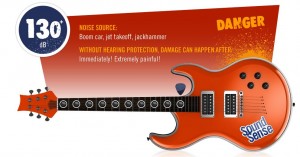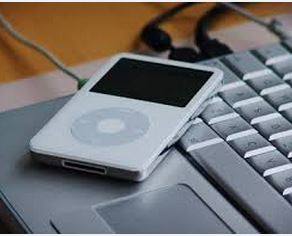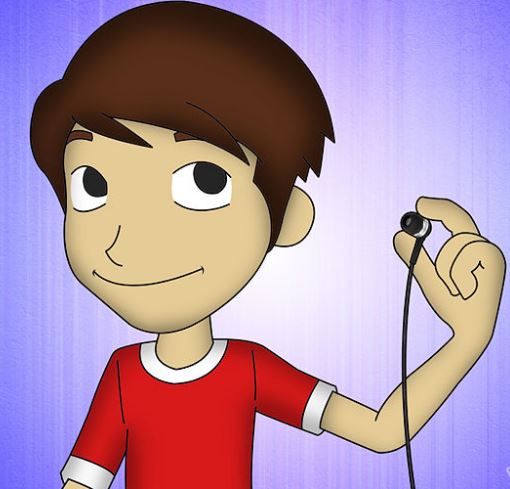Related Products
For Professionals
- Amplification
- Assessment of Student Skills, Challenges, Needs
- Early Childhood: Infants, Toddlers, Preschool
- Hearing Loss – Identification, Impact and Next Steps
- IDEA Law Summary Information
- Language and Speech Development Issues
- Legal Issues in Serving Children with Hearing Loss
- Listening (Auditory Skills) Development
- Planning to Meet Student Needs
- Self-Advocacy Skills for Students with Hearing Loss
- Self-Concept: How the Child with Hearing Loss Sees Himself
- Social Skills
- Speech Perception & Learning
Related Teacher Tools Takeout Items
Noise-Related Hearing Loss
My child has a personal music player and I can hear it when she has it in his ears. Could this hurt her hearing?
e-brochure from the World Health Organization:
Make Listening Safe
NOISE – Lifelong Harm to Children’s Hearing provides information on what LOUD really is, how loud sounds can harm hearing and what can be done to prevent permanent hearing loss.
ARTICLE: Haller, A.K. & Montgomery, J.K. (March/April, 2004).
Noise-Induced Hearing Loss in Children: What Educators Need to Know.
Teaching Exceptional Children, 36(4), 22-27.
Q. CAN AN IPOD/MP3 PLAYER DAMAGE HEARING?
A. Yes, if you listen too long and too loud! Make sure the volume of your music player is set at the halfway mark – or less. The safest type of earbuds limit the decibel level going into your ears. Did you know that earbuds can actually add another 5 decibels to the noise? Make sure your earbuds fit snugly in your ears to block out outside noise so you don’t have to turn up your music volume – and keep the volume at a reasonable level.
Q. WHAT’S A DECIBEL, AGAIN?
A.
The decibel is a measurement of how loud a sound is. Another way to explain it – sound travels in waves and its energy is measured in decibels. The more forceful the wave, the higher the decibel. On the
decibel scale, the quietest sound that can be heard is 0dB – almost silence. A whisper is 15dB, normal talking is 60dB and yelling is around 90dB.
Q. HOW LONG IS ‘TOO LONG’ WHEN LISTENING TO MUSIC?
A. The longer your inner ear hair cells are exposed to loud noise, the greater the chance of damage. Put another way – the louder the sound, the less time you can listen safely. You can talk with your friends at 65dB for a very long time with no problem. At 85 dB, though, you can listen for eight hours (as long as there’s nothing else louder than that going on). And with every increase of 3dB, your ‘safe listening’ time is cut in half! For example, you can listen safely to your iPod at 88dB for 4 hours and at 90 decibels, for only 2 hours! If you crank it up to 100dB, your ear hair cells will be stressing out after just 15 minutes!

HOW TO SAVE YOUR HEARING
What are the biggest loud-noise
bad guys?
Well, the world’s Top 10 Loudest Sounds are most likely
not going to happen in your life. But what about those other everyday loud sounds such as loud music on your music player, or video games, or TV?
Then there’s traffic, subways and buses, noisy lunchrooms, screaming hockey games and other sports – they all make life difficult for our ears.
Want to keep enjoying your favourite sounds? Then be smart and protect your hearing. It’s not hard to do. Here are some
reallysimple ways to keep your hearing for a long time.
Make sure your music player is at the halfway mark or lower – that’s still loud enough for some good listening!
But how can you tell if the music is too loud?
- If you’re listening to your music and you can’t understand what your friend is saying to you – it’s too loud.
- If your friend is listening to his or her MP3 player on earbuds – and you can hear the music – it’s too loud
- If you’re watching TV or playing video games and the noise bothers other people – it’s too loud.
MORE MP3 SAFE LISTENING TIPS
- Make sure earbuds fit snugly in your ears. If they don’t block out background noise, you’ll end up turning up the volume!
- Sound-
attenuating earbuds help keep the sound below the danger level – but still enjoyable! - Use over-the-ear head phones – they sound better and are better for you.
Whether it’s music through headphones or at a concert, dances, or car races – the longer your ears are exposed to loud noise, the more dangerous it is. You need to put a time limit onsounds over 85dB. For every 3dB over 85, you can cut the safe listening time in half. (Or, you can wear earplugs!)
STAND BACK FROM THE NOISE!
The farther back you are from the source of sound, the quieter and less dangerous it is. At a concert, you don’t have to be up close and hugging those amplifiers, because the sound blast could make your ears ring for days. Stand back and be safe!
GIVE YOUR EARS A BREAK!
Damage occurs not only because of how LOUD you listen to music or other sounds, but also how LONG! If you are somewhere loud, give your ears regular breaks from the noise. Same thing with your music player – take regular breaks to rest your ears.
WEAR EARPLUGS OR OTHER HEARING PROTECTION!
And that’s
earplugs, not
earbuds. Earplugs reduce the amount of decibels coming into to your ears, making it safer for you to listen. Wear ear plugs at a concert, a truck show or at the hockey rink…at the arcade or at car races and fireworks. You will still hear all the great sounds, but not have to worry about damaging your hearing. Besides earplugs, there are great over-the-ear muffs and headgear that you can wear during noisy activities, like cutting the grass.
And be a nice person – bring some extra earplugs for your friends, too.
CHECK YOUR HEARING!
Now is a good time to have your hearing checked and get a
baseline audiogram (a picture of your hearing test results). Then, as you get older, you can compare the audiograms to see if you’ve been doing a good job of protecting your hearing.
And don’t forget – if you have ringing in your ears, or if voices sound muffled, NOW is the time to have a hearing test.
SPEAK UP – WHEN YOU KNOW IT’S TOO LOUD!
Is the music in a restaurant too loud? How about your classroom, lunchroom, people at a family dinner, the car radio?
Tell someone!
It’s
very OK to say, “It’s too loud here and it’s hurting my ears!” Someone else is probably thinking the same thing, but didn’t know how to ask for less noise. When you
advocate for less noise, you’re not only protecting your hearing, but everyone else’s too!
REMEMBER!
Pack’em, Stick’em, Stash’em! Take earplugs with you wherever you go — pack’em, in your pocket and stick’em in your ears! They’re so small that you can easily stash them in your pocket or backpack.
Getting Down: Turn DOWN your iPod/MP3 player and speak UP if you think your friends are listening to theirs too loudly.
Keep It Low for Little Bro. Little ears need extra care. Don’t let your younger brothers and sisters play with your music players OR noisy toys.
Good Vibrations Idea: Set your cell phone on vibrate instead of high volume alert!
Tools & Information for Teaching about Noise and Hearing Loss
Lesson Plans and Activities and
Youth Hearing at Risk from the American Speech and Hearing Association
Information on the
Dangerous Decibels program
Recommendations by the
CDC for preventing noise-induced hearing loss in children
List of Student and Teacher Activities and
Noisy Planet from the National Institute on Deafness and Other Communication Disorders
Noise-Induced Hearing Loss from the American Hearing Research Foundation
Noise-induced hearing loss in children: A ‘less than silent’ environmental danger article from Pediatrics and Child Health (i.e., high school level projects)



